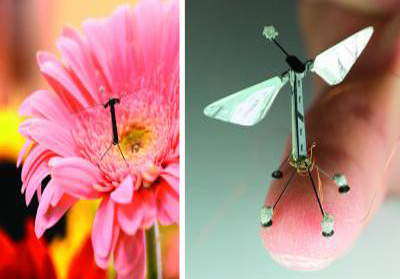Nature-inspired flying drones near you soon
 Washington, May 24 : Drone of the future will not just deliver pizzas or take a dog to a morning walk, they could be as tiny as insects, enter cramped places for rescue operations or fly like birds when searching vast expanses of land.
Washington, May 24 : Drone of the future will not just deliver pizzas or take a dog to a morning walk, they could be as tiny as insects, enter cramped places for rescue operations or fly like birds when searching vast expanses of land.
With precision landing and better flight control, the future flying robots could better navigate the urban environment.
Researchers across the world are now taking inspiration from birds, bats, insects and snakes to build next-generation drones that can even withstand extreme heat, freezing cold, torrential rain or thunderstorms.
A research team from Hungary have developed an algorithm that allows a number of drones to fly together like a flock of birds.
The effectiveness of the algorithm was recently demonstrated by using it to direct the movements of a flock of nine individual quadcopters while they followed a moving car.
A group of researchers from Harvard University have also developed a millimetre-sized drone with a view to using it to explore extremely cramped and tight spaces.
The most challenging problem for airborne robots will be strong winds and whirlwinds. A US research team has begun to tackle this by studying the hawk moth.
In their study, the researchers flew hawk moths through a number of different whirlwind conditions in a vortex chamber, carefully examining the mechanisms that the hawk moths used to successfully regain flight control.
Another team have found a way of reducing the amount of power that is required to operate drones by creating a "jumpglider".
Inspired by vertebrates like the flying squirrel, the flying fish and the flying snake, the “jumpglider” combines an aeroplane-shaped body with a spring-based mechanical foot that propels the robot into the air.
The findings appeared in a special edition of the journal Bioinspiration and Biomimetics.(IANS)